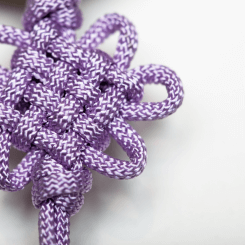April 15, 2024
Shattering the Juggling Act Myth
Imagine this: It’s a crisp Monday morning, and as you sip your freshly brewed coffee, the soft sunlight spills across your workspace. However, the tranquility is short-lived. Your calendar notifications start pinging relentlessly—meetings, deadlines, school events for the kids—all demanding a piece of your time. It feels like you’re a circus performer, spinning plates on poles, hoping none of them come crashing down. This juggling act is an all-too-familiar scenario for many, constantly trying to balance the scales of work and life, yet often feeling that neither truly wins.
It’s here we introduce a transformative concept: work-life integration. Work-life integration means creating a seamless blend of personal and professional responsibilities, allowing for a more fluid and adaptable approach to managing daily life.Unlike the traditional approach of balancing—where work and personal life are seen as separate entities competing for your time—integration melds these aspects into a cohesive whole. This approach doesn’t just patch up the conflicts between work and personal life; it weaves them together, creating a fabric that supports a more fulfilling lifestyle. The benefits of this integrated approach are manifold, including enhanced productivity and significantly reduced stress levels.
In exploring the difference between work-life balance and work-life integration, it’s important to understand the distinct approach each strategy takes in managing our daily lives. Work-life balance typically implies a clear separation between work and personal life, aiming to allocate an equal amount of energy and time to each area. This often involves a rigid structuring of day-to-day activities to ensure that work does not spill over into personal time, and vice versa.


On the other hand, work-life integration embraces a more fluid approach, blending personal and professional responsibilities in a way that aligns with individual priorities and schedules. This concept acknowledges that the strict compartments of ‘work’ and ‘life’ are often unrealistic and instead promotes a flexible merging of the two, aiming for a harmonious existence where personal satisfaction and professional achievements coexist seamlessly. Understanding this difference is crucial for choosing the strategy that best fits your lifestyle and career goals.
Unpacking this concept further, we unveil ten strategic approaches to help you transition from work-life balance to work-life integration—effortlessly aligning your professional achievements with personal well-being. These strategies are not just about making more time but about making your time more meaningful, ensuring that every hour counts towards building a life that celebrates both career success and personal happiness.




Identify Your Ideal Work-Life Integration: Laying the Foundation
Imagine waking up each day feeling like the conductor of an orchestra, where every section plays harmoniously, not just loudly. This harmonious existence starts with a crucial step: self-awareness. Understanding who you are and how you function best isn’t just about self-improvement; it’s about crafting an integration plan that turns the cacophony of daily tasks into a symphony of productivity and satisfaction.
Actionable Tips for Crafting Your Integration Plan:
Values Identification Exercise: Discovering What Truly Matters
Think of your values as the compass that guides your ship through the stormy seas of work and personal life. Taking the time to identify what truly matters to you outside of your professional commitments can illuminate the path toward true integration. Begin by listing the aspects of your life that bring you joy, fulfillment, and peace. Is it quality time with family, pursuing a hobby, or volunteering? Understanding these can help prioritize actions that resonate with your core values. Linking your values to work-life integration is a win-win.
Work Style Assessment: Tuning Into Your Productive Rhythms
Are you an early bird who catches the worm or a night owl who thrives under the moonlight? Recognizing your natural work style is like knowing whether you’re a sprinter or a marathon runner. Each style has its strengths and ideal times for peak performance. Assess your daily patterns and align your work schedule to when you are naturally most alert and creative. This alignment not only boosts efficiency but also ensures you are working with your biological clock, not against it.
Energy Level Mapping: Charting Your Highs and Lows
Mapping your energy levels throughout the day can be as revealing as reading a personal diary. It involves observing and noting the times you feel most energetic and those when you need a break. This practice helps in planning your day around your energy peaks, scheduling demanding tasks when your energy is high and saving lower-energy tasks for your less energetic periods.
10 Strategies for Seamless Integration: The Toolbox
Transitioning to a lifestyle where your professional and personal lives coexist without conflict requires the right tools and strategies. This section provides a toolkit for work-life integration, designed to harmonize your daily routines and responsibilities.
- Setting Boundaries: Mastering the Art of Saying No
One of the most effective tools in your integration toolbox is the ability to set clear boundaries. This might mean communicating your work hours to your colleagues and family, or using technology to manage your availability. For instance, setting your messaging apps to “Do Not Disturb” during family dinners or personal time can protect your non-work hours. Remember, every ‘no’ to distractions is a ‘yes’ to your priorities.
- Batching Similar Tasks: Streamlining for Efficiency for Work Life Integration
Batching involves grouping similar tasks together to maximize concentration and minimize distraction. For example, dedicate specific blocks of time to handle all your emails and calls. This approach reduces the cognitive load of switching between tasks, allowing for a smoother transition throughout the day and freeing up time for other important activities.
- Leveraging Technology: Smart Tools for Smart Work
In today’s digital age, an array of apps and tools can enhance your productivity and help manage your time more effectively. From productivity trackers to scheduling software, these tools help you stay on top of your tasks and appointments with minimal fuss. Embrace technology that supports your goals of work-life integration, such as calendar apps that sync your professional and personal commitments into one seamless schedule.
- Embracing Flexibility: Adapting to the Ebb and Flow for Work-Life Integration
The ability to adjust your schedule to accommodate unexpected situations is crucial for maintaining work-life integration. This flexibility might mean shifting your work hours to attend your child’s school play or rearranging your week to handle a work crisis. By staying adaptable, you ensure that your commitments on both fronts are met with grace and efficiency.
- Prioritizing Well-being for Work-Life Integration: Scheduling Breaks for Renewal
Integrating work and life successfully also means making time for yourself. Schedule regular breaks to recharge, whether it’s a short walk, meditation, or simply time to read. These breaks are not just pauses; they are vital moments that replenish your energy and enhance your overall productivity and well-being. Prioritizing these moments can transform them from luxuries to essentials, reinforcing the foundation of your integrated life.




- Exploring the 7 Types of Rest: A Holistic Approach to Rejuvenation
Incorporating the concept of the 7 Types of Rest, as outlined by Dr. Saundra Dalton-Smith, can revolutionize your approach to downtime. These types include physical, mental, sensory, creative, emotional, social, and spiritual rest. Understanding and applying these distinct types of rest can help address the specific areas where you’re depleted. For example, if your work is highly creative, ensuring you have time for mental and creative rest can be crucial in maintaining your overall productivity and well-being.
- Utilizing Micro-Adventures: Short, Spontaneous Breaks
Micro-adventures are brief, adventure-based activities that you can fit into your regular schedule. These could be as simple as trying a new restaurant during your lunch break or taking a different route during your evening walk. These small escapades can provide a sense of novelty and rejuvenation, helping to break the monotony of daily routines.
- Implementing a ‘No Meetings’ Day: Focused Work Time
Setting aside one day per week with no meetings can be a game-changer. This day is dedicated to deep work, allowing you to focus on projects without interruptions. This strategy can be particularly effective in ensuring you make significant progress on important tasks, enhancing your sense of accomplishment and control over your work.
- Morning Rituals: Starting Your Day on Your Terms
Developing a morning ritual that energizes and centers you can set the tone for the entire day. Whether it’s journaling, a fitness routine, or a meditation session, having a consistent morning practice helps you begin your day with intention and focus, aligning your daily activities with your personal and professional goals.
- Utilizing Virtual Assistants: Delegating for Efficiency
Leveraging virtual assistants for both personal and professional tasks can significantly enhance your ability to manage your responsibilities. From scheduling appointments to managing emails, virtual assistants can handle routine tasks, freeing up your time for more complex and rewarding activities. This can be particularly beneficial for those who need to maximize their productivity without sacrificing personal time.
Prioritizing Well-being for Peak Performance: Fueling the Fire
Imagine your body and mind as a finely tuned high-performance vehicle. Just as such a vehicle requires the right fuel and regular maintenance to deliver its best on the road, your well-being is the crucial fuel that powers your journey through the demands of both work and personal life. Without prioritizing this, even the most capable among us can find themselves running on empty, struggling to meet the pace of their responsibilities.
The Essential Link Between Well-being and Work Performance
Well-being is not merely an add-on to our lives; it’s the engine that powers them. There’s a compelling body of research suggesting that the physical and mental health of an individual directly influences their work performance. When we are well-rested, nourished, and at peace, our productivity, creativity, and problem-solving abilities soar. Conversely, neglecting self-care can lead to burnout, a drop in efficiency, and a decrease in the quality of our work and interactions.
Self-Care: A Non-Negotiable for High Achievers Wanting Work-Life Integration
For those accustomed to setting and surpassing high standards, self-care might mistakenly be viewed as a luxury or an indulgence. However, it’s quite the opposite—it is a fundamental practice that sustains high performance. Engaging in self-care is not selfish; it’s one of the most responsible actions you can take. It ensures you’re at your best, not just for yourself but for your team, your family, and your community. Here are 10 doable self-care actions.




1. Sleep Optimization: The Foundation of Well-being
Consider sleep as the best insurance policy for your health and productivity. Quality sleep acts like a reset button for the brain, enhancing memory recall, regulating emotions, and replenishing energy. To optimize your sleep, establish a calming bedtime routine and aim for 7-9 hours of quality sleep per night. Keep your bedroom environment conducive to rest by maintaining a cool temperature, using blackout curtains, and possibly incorporating white noise or calming music.
2. Exercise Routines: Strengthening Body and Mind
Regular physical activity is a cornerstone of good health and a powerful antidote to stress. Whether it’s yoga, brisk walking, or more intense activities like cycling or running, find an exercise routine that you enjoy and can stick with. Exercise not only improves physical health but also boosts endorphins, the body’s natural mood lifters, which can enhance your mood and mental clarity.
3. Mindfulness Techniques: Cultivating Emotional Balance
Mindfulness practices such as meditation, deep-breathing exercises, or even mindful walking are vital tools for maintaining emotional health. These techniques help anchor you in the present moment, making it easier to manage stress and reduce anxiety. Regular mindfulness practice can improve your focus, patience, and capacity to handle the complexities of work and personal life with a calm and clear mind.
4. Work-Life Harmony: A Balanced Approach
Achieving work-life harmony is about finding a rhythm that suits your personal and professional life—allowing you to thrive in both without sacrificing one for the other. Integrating well-being practices into your daily routine is not just beneficial; it’s essential for sustaining long-term success and fulfillment. By prioritizing these practices, you not only enhance your performance but also improve your quality of life, ensuring that every day you are the best version of yourself.
5. Embracing the Holistic Approach to Self-Care
The journey to integrating well-being into your daily life is both rewarding and transformative. It’s about recognizing that every aspect of your well-being—physical, mental, and emotional—is interconnected, and that nurturing each aspect is crucial for maintaining your overall health and enhancing your performance in all areas of life.
6. Nutritional Well-being: Fueling Your Body and Mind
Just as a car needs the right type of fuel to run efficiently, your body requires nutritious food to perform at its peak. Integrating a balanced diet rich in fruits, vegetables, lean proteins, and whole grains can boost your cognitive function and energy levels. Consider planning your meals ahead to ensure you’re consuming foods that nourish and energize you throughout the day, especially during busy periods when the temptation to opt for quick, less healthy options can be strong.
7. Social Well-being: Connecting with Others
Human beings are inherently social creatures, and meaningful connections are vital for our emotional health. Building and maintaining strong relationships with friends, family, and colleagues can provide emotional support, reduce stress, and increase happiness. Make time to engage in social activities that bring joy and relaxation, whether it’s a coffee chat with a friend or a team outing.
8. Professional Development: Continuous Learning and Growth
Part of your well-being involves feeling fulfilled and challenged in your professional life. Continuous learning and development can fuel your career growth and satisfaction. This might involve pursuing further education, attending workshops, or seeking mentorship and feedback. Staying engaged and proactive in your professional development not only boosts your career but also contributes to your sense of competence and self-esteem.
9. Environmental Well-being: Creating a Supportive Space
The environment you operate in can significantly affect your mood and productivity. Whether it’s your office or home, creating a space that inspires and supports your well-being is key. This might involve organizing your workspace to reduce clutter, adding plants for a touch of nature, or ensuring sufficient natural light. A pleasant and organized environment can enhance your focus and overall sense of well-being.
10. Financial Well-being: Managing Resources Wisely
Financial stress is a common source of anxiety, which can impact both personal and professional life. Developing a sound financial plan can alleviate stress and contribute to your overall well-being. This might include budgeting, saving for the future, investing wisely, and seeking professional advice if necessary. Financial security provides peace of mind, allowing you to focus more on your career and personal life without undue stress. Because increase financial stress can be a reason to work more and throw of your work-life integration.
Integrating Well-being into Your Life’s Symphony
Integrating these well-being practices into your life isn’t just about preventing burnout; it’s about composing a life that is rich, fulfilling, and sustainable. Each practice is like a note in a broader symphony—individually important, but when played together, they create a harmony that enhances both your personal and professional life. By embracing a holistic approach to self-care, you ensure that every day is an opportunity to perform at your best, making meaningful progress toward your goals while enjoying the journey along the way. Which is the ultimate intention of increasing your work-life integration.
Conclusion: Embracing the Journey of Continuous Improvement
As we manage our daily responsibilities and careers, the concept of work-life integration is a more practical and sustainable choice compared to the old idea of work life balance. Integrating our personal and professional lives brings many benefits, like better productivity and overall happiness. By blending different aspects of our lives into one harmonious experience, we allow ourselves to thrive in every area.
The Evolving Nature of Work-Life Integration
It’s important to understand that the perfect balance is not a fixed target but something that changes over time. That’s a major difference between work life balance and work life integration. Life is always changing, and so are our needs at work and home. This means we need to be ready to adjust our strategies as our lives evolve. Embracing this change and being willing to constantly reassess our situation is key to maintaining a fulfilling life and career.
Encouragement to Experiment and Adapt to Achieve Work-Life Integration
To truly master work-life integration, it’s crucial to try out different strategies and see what works best for you. Whether it’s setting clear boundaries, using technology wisely, or making sure to take care of your well-being, the success of these methods can vary from person to person. Encourage yourself to experiment with new ways, learn from your experiences, and continuously refine your approach. This ongoing process of experimenting and improving is essential in creating a life that not only meets your needs but also makes you happier and more successful.
A Call to Action for Work-Life Integration: Share and Grow Together
Now, I encourage you to share your own experiences. What challenges have you faced in integrating life and work? What strategies have worked for you? Where do you struggle with work-life integration, and what have you learned? Sharing your stories in the comments below can help all of us. We can grow and support each other by exchanging our experiences, helping others move beyond the usual idea of balance towards a more integrated and fulfilling life.
In summary, this blog covered key strategies and ideas to help you manage both your personal life and career effectively with some simple work-life integration strategies. From understanding the basics like self-awareness to using tools for better balance and prioritizing your overall well-being. Each part contributes to creating a life where personal happiness and professional success support each other. Remember, the path to work-life integration is ongoing, and every step you take builds a stronger, more balanced life. Let’s keep talking—your insights might just help someone else find their way to a happier, more integrated life.


I’m an ICF Professional Certified Coach (PCC) and executive coach for Twanna Carter Professional & Personal Coaching, LLC. I flubbed my first career transition from the military so badly, it took me the next 10+ years to recover. I know what it feels like to struggle with imposter syndrome and uncertainty about my worth in the workplace. It’s why I am dedicated to empowering Black women. Helping them navigate change and uncertainty by providing them with the tools and strategies they need to be successful. Schedule a 30-Minute V.I.P. Roadmap session today.
Curated Reads: Essential Books to Add to Your Personal Library
- Melaninated Magic: 180 Affirmations to Nurture Your Soul and Unleash Your Black Girl Joy by Twanna Carter, PhD
- I’m Not Yelling: A Black Woman’s Guide to Navigating the Workplace (Successful Black Business Women), Elizabeth Leiba
- Stop Overthinking: 23 Techniques to Relieve Stress, Stop Negative Spirals, Declutter Your Mind, and Focus on the Present (The Path to Calm) by Nick Trenton
- Influence: The Psychology of Persuasion by Robert B. Cialdini
- How to Win Friends and Influence People by Dale Carnegie
- High-Functioning Anxiety: A 5-Step Guide to Calming the Inner Panic and Thriving by Dr. Lalitaa Suglani
- “Quiet: The Power of Introverts in a World That Can’t Stop Talking” by Susan Cain.
- Unleash your career potential with our free library of resources. Access our free Career Resource Library today and start your journey to a more fulfilling career.
- Taming Your Gremlin: A Surprisingly Simple Method for Getting Out of Your Own Way by Rick Carson
- The Confidence Code: The Science and Art of Self-Assurance—What Women Should Know by Katty Kay & Claire Shipman
- Stop & Shift: The Mindset Reset that Changes Everything by Karen Allen
- Unapologetically Ambitious: Take Risks, Break Barriers, and Create Success on Your Own Terms by Shellye Archambeau
Images by Freepik
Read My Latest Blogs…
- What If Your Career Wasn’t Meant to Be This Hard?7 Thought-Shifting Prompts to Help You Discover the Work You’re Meant For You know that quiet ache that shows up on Sunday nights? The way your stomach tightens when you think about Monday morning… again? You’ve done everything right in your career.Checked all the boxes.Earned the title. Got the degree. Landed the job. But somewhere… Read more: What If Your Career Wasn’t Meant to Be This Hard?
- Why Boundaries Are the Richest Thing You Can Build This YearWealth Isn’t Just About Your Bank Account When you hear the word “rich,” what pops into your mind? Diamond necklaces? Stock portfolios? That one aunt’s mysterious vacation house? We’re conditioned to equate wealth with dollars and digits. But what if I told you boundaries, yes, those sometimes-awkward personal limits, are the true luxury assets you… Read more: Why Boundaries Are the Richest Thing You Can Build This Year
- Are You Really Being Too Much, Or Just Being Seen?Have you ever felt the need to shrink yourself at work or in social spaces, just to avoid being labeled as “being too much”? Maybe you’ve been told you’re too outspoken, too confident, too ambitious, or simply too visible. For many Black women and other marginalized professionals, this fear of visibility is more than a… Read more: Are You Really Being Too Much, Or Just Being Seen?
- Career Shift? These 9 Transferable Skills Resources Are Game-ChangersAs an executive-level professional aiming for a strategic career pivot, knowing your transferable skills isn’t just beneficial, it’s essential. Transferable skills are abilities you carry from one job to another, vital for succeeding across various roles and industries. For senior-level executives, clearly identifying and articulating these skills is the cornerstone of an effective career pivot.… Read more: Career Shift? These 9 Transferable Skills Resources Are Game-Changers
- You Need a Hustle Detox. Not Another Planner.Are you tired of buying yet another planner, hoping THIS one will finally fix your chaos? You know the drill: glossy cover, color-coded tabs, promises of productivity magic. But a few weeks in, you’re still overwhelmed, exhausted, and drowning in to-dos. The truth? It’s not your planner, it’s hustle culture. If you’re serious about reclaiming… Read more: You Need a Hustle Detox. Not Another Planner.
- The 5 Core Values Every Black Woman Executive Should Define Before Her Next Career MoveHave you ever felt overwhelmed by opportunities, yet unsure which path truly fits your ambitions, identity, and well-being? If you’re a Black woman executive ready for your next career move, now is the time to get strategic and clear. The key? Defining your non-negotiable core values… …before you negotiate your next offer or take on… Read more: The 5 Core Values Every Black Woman Executive Should Define Before Her Next Career Move
- How to Protect Yourself from Being Managed Out – The Ultimate Survival Playbook for Black Women ExecutivesYou walk into the Monday morning meeting, coffee in hand, feeling ready to tackle the week. But something’s off. The room feels colder. Your input is brushed off. Projects you once led are handed elsewhere. Uh-oh! Is it just your imagination? Or is this exactly what happens when you don’t know how to protect… Read more: How to Protect Yourself from Being Managed Out – The Ultimate Survival Playbook for Black Women Executives
- What Your Inner Critic Is Really Costing You. And How to Take Back ControlHave you ever replayed a single mistake in your mind for days, doubted your abilities before a big meeting, or hesitated to ask for a raise because you weren’t “ready”? That relentless voice in your head, your inner critic, might feel like it’s keeping you “humble,” but the real cost goes far deeper. Let’s uncover… Read more: What Your Inner Critic Is Really Costing You. And How to Take Back Control
- Why Black Women Execs Doubt Their Voice (and How to Reclaim Your Power)And it starts now. If you’re ready to reclaim your voice, you don’t have to do it alone. Schedule your V.I.P. Roadmap Session today. A 45-minute, focused coaching session where you’ll walk away with a personalized strategy for leading on your terms, without burnout, self-doubt, or compromise. 🤎 I’m a certified executive coach and an… Read more: Why Black Women Execs Doubt Their Voice (and How to Reclaim Your Power)
- The Trauma Behind the Mask: Why I Walked Away from My Six-Figure JobI didn’t leave my job because I was unqualified. I didn’t leave because I couldn’t handle the work. They began managing me out. Because I followed policy and chose to telework during the height of COVID-19. I left because of workplace trauma. Let that sit for a moment. During one of the most terrifying global… Read more: The Trauma Behind the Mask: Why I Walked Away from My Six-Figure Job
- Stop Overgiving. Because It’s a Silent Career Killer for High-Achieving WomenYou’re smart. Capable. The one everyone counts on. From boardrooms to family rooms, you handle it all with grace. But beneath the surface, you’re exhausted. And, yes, maybe a little resentful. You’re doing everything right, yet something still feels off. Let me tell you what I’ve seen time and time again with my executive coaching… Read more: Stop Overgiving. Because It’s a Silent Career Killer for High-Achieving Women
- You Feel Empty at Work, But Everyone Needs YouFor Black Women Who Keep Performing. Even When the Tank Is Empty Let’s keep it real for a moment, how many times do you feel empty, but still show up like you’re full at work? Your phone rings, the inbox keeps flooding, and you’ve got Zoom meetings back-to-back. But inside, there’s a hollowness you can’t… Read more: You Feel Empty at Work, But Everyone Needs You






















+ show Comments
- Hide Comments
add a comment